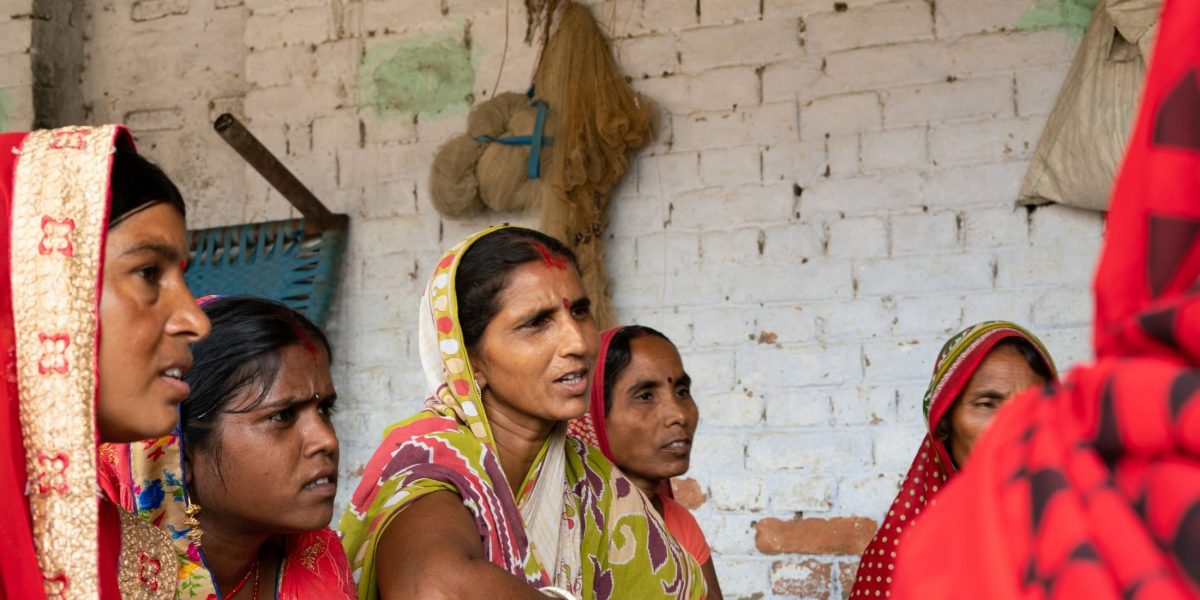“Capital plus plus”: Mobilizing domestic capital to support impact entrepreneurs in India

Catalyst Fund Circle of Investors member Asha Impact on the value of locally rooted investment capital
India is the third largest fintech ecosystem in the world, and locally, the sector is dominating investment flows as the second-highest funded sector after e-commerce. Digital payment solutions, digital lending and insurtech are particularly exciting fields for investors, with investment in payments startups in particular tripling in 2019 to $2.1 billion.
However, India’s fintech story has already taken a new turn since the start of COVID-19 and the related financial crisis. Where fintech dominated the investment landscape during the last week of February, with the likes of BharatPe raising $75M and PhonePe raising $56M, in the two months since, investment has begun to dry up and similar startups are struggling to cope. Aye Finance managed to raise a $2M round during the lockdown period, but lending startups are facing a cash crunch. Aye Finance may have been able to attract investment because of their focus on MSMEs, and their positioning as part of the potential solution for these vulnerable firms during lockdown.
Right now, startups globally are re-grouping and pivoting to provide solutions that can make an impact in this environment, while doing everything they can to keep the lights on – particularly as investors take stock of the situation and make more strategic bets. It’s more important than ever for both those startups and their potential investors to have a deep understanding of the local market and their customers, and to be prepared to quickly adapt to more coming changes.
Asha Impact: the case for locally rooted investors
As Catalyst Fund, we understand that a significant key to success for startups in emerging markets is access to a regional ecosystem that can offer support. In addition to accelerating the startups, we work to accelerate the ecosystem around them, generating pathways for scale via 1:1 connections with relevant investors and corporate innovators. We engage regional and global investors in our Circle of Investors community, comprising 50+ global and local investors with rich experience and interest in fintech and emerging markets.
We recently welcomed Asha Impact, an early-stage regional investor in India, to our Circle. The Asha team is deploying domestic capital in India for mission-driven entrepreneurs, or as they like to call it, “capital plus plus”. Today, India is still behind its Asian counterparts such as China and Japan when it comes to domestic capital. In a 2019 report, only 26% of all startup investments were domestic, as opposed to 44% global investments in Indian startups. Investors such as Asha Impact are driving the local investment climate and have become the poster child for successful investments and exits in the country. Here are some excerpts from our conversation with Aditi Gupta, Principal, Investments at Asha Impact.
The interview has been edited and paraphrased in places with the interviewee’s approval to provide more clarity and context.
CF: You pride yourself on offering founders access to domestic capital – what is the advantage you see in working with local investors?
AG: India is by no means a straightforward country. While the opportunity is massive in financial services and otherwise, the diversity of the country is challenging for any startup to navigate. Having access to domestic capital means you’re working with LPs who have that existing know-how. For early-stage startups in India, working with partners who have that regional context and understand the challenges is underrated, but very essential.
Particularly when it comes to startups that are impact-focused, investors have a tendency to look at them as 0-1 on a linear scale: either you’re a commercial business or you’re a social enterprise. At Asha Impact, we combine the two, and our portfolio companies enjoy access to our eight LPs, many of whom have prior experience as founders themselves. Even as these new startup businesses are very different from those of the LPs, our founders benefit from this 1:1 experience as the journey of any such startup can look very similar, especially during rapid growth phases.
CF: What does ‘impact investing’ mean to you, and what is your process for investing?
AG: When we started in 2014, we asked ourselves if we can catalyze domestic capital to back businesses which are solving problems for 200-300 million Indians. This “emerging middle” segment is who we set out to support.
For us, combining impact and investing means we look beneath the surface and work alongside our entrepreneurs with a vision. We started small and found early success with startups like Varthana and Vastu. So much so, we were able to exit Varthana just after two years of investment. Today we’ve reached a stage where we have 8 LPs and 13 portfolio companies.
We look at impact as a co-linear goal with scalability. Anyone who is an impact investor needs to ask if they’re backing venture-fundable models, just as much as they would look for impact. In addition, we look at social impact, both in terms of the product or service and the stage of the company. Thus, once we know a startup can attract commercial capital, we exit to unlock our capital for catalyzing other early-stage startups that need our support.
CF: Do you see a lot of competition coming from commercial investors?
AG: It’s ironic how the same thing that speaks to the success of impact investing is also our biggest challenge – this confluence of impact and commercial capital. More often than not, we find ourselves competing against bigger, more mainstream investors. They perceive these startups only as investment opportunities [without an intentional focus on local impact], and given their size, it works for them. However, as a regional impact investor, we look at it from a “problem statement” approach: what is the problem a particular startup is well-positioned to solve? We’re interested in more than numbers – we’re focused on impact.
Needless to say, commercial investors create healthy, competitive pressure in terms of deployment in the market. Founders sometimes see greater value in these bigger brands that have global portfolios. While I think commercial capital can work in several scenarios, however, they also tend to have an unreasonable expectation of a grow-at-all-costs Silicon Valley mentality, or as we like to call it, growth on steroids. Not all businesses can deliver that, particularly in the financial services industry. For those that do, we worry that if a model goes bust, then it would leave a bad taste in the mouth of commercial capital investors for a long time.
CF: As an investor in early-stage fintech, where do you see the market going, and what do you think investors are getting right/wrong about India?
AG: The amount of investor interest in Indian fintech is encouraging, and investors are right in seeing the opportunities. At the same time, digital lending is exploding in India, which both excites and worries us as investors. We believe that financial services work differently, and growth-at-all-costs isn’t the way to grow financial services businesses. Investors are guilty of fueling this growth too fast. These businesses deserve to be funded but perhaps not at this rate. We’re afraid that if we do this too fast and things go south, we end up hurting the customers who this is meant for.
What’s been exciting for us as investors has been this approach of vertical use cases of credit, instead of the traditional horizontal approach*. This ensures that startups gain sector knowledge and tailor their products appropriately for customers. Startups such as Varthana, Eduvanz (education financing) and Samunnati, FarMart (agri financing), and Affordplan (healthcare) are already beginning to do that. The other area we are excited about are startups like Kaleidofin, Khatabook, Kyepot which look beyond credit, towards financial wellness. We are keeping a close eye on these models and eventually, I think they can truly unlock financial health and digital inclusion in India.
CF: How are you reacting to COVID-19, and do you think local investors have a specific role to play during the crisis?
AG: We believe the role of investors and board members in the times of a crisis is to help portfolio founders prioritize right and steady their ships. Thus, we have been supporting our investees in finding optimal ways to conserve cash, protect employees’ well-being and be aware of industry best practices. This becomes even more important in financial services, where we have seen the Central Bank (RBI) announce new measures every fortnight. Being a domestic investor, we have deep networks amongst players of all sizes and we are helping portfolio companies to be plugged in, and find the best way to adapt in this uncertain environment.
*Author’s note: By horizontal use cases, Aditi is referring to the idea of lending across industries without a specific focus in any one single industry. While dealing with low-income segments, a one-size-fits-all model is not effective, and so products that are not tailored to the customers’ needs often lack traction. Recently, there has been a trend to focus on a single industry, and go deeper to create a holistic financial product that caters to the growing needs of customers, including access to credit. Startups that are implementing this model are seen to be incorporating vertical use cases of credit in their product strategies.


